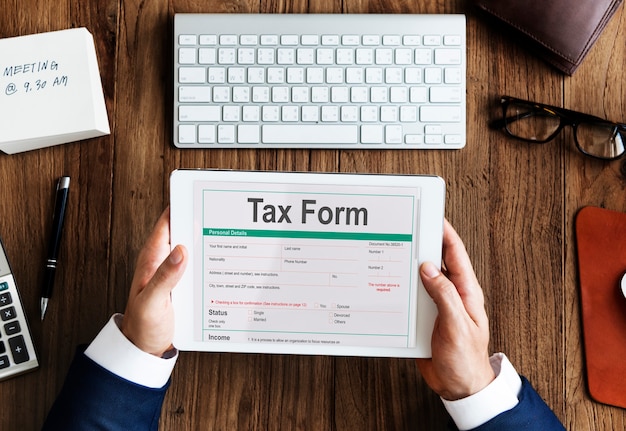How To Know If Someone Blocked You On iMessage? 5 Secret Hacks!
Apr 16, 2025

Apr 16, 2025

Apr 16, 2025

Apr 15, 2025

Apr 11, 2025

Apr 11, 2025

Apr 11, 2025

Apr 08, 2025

Mar 29, 2025
Sorry, but nothing matched your search "". Please try again with some different keywords.


As an independent contractor, it is crucial to understand how taxes work and how to file your taxes accurately. The Internal Revenue Service (IRS) considers independent contractors as self-employed individuals. They are responsible for paying both the employees and employer portions associated with Social Security and other Medicare taxes. One of the most significant tax forms for independent contractors is the 1099 MISC Form.

The 1099 MISC Form is required to be filed by businesses or individuals who have paid $600 or more to a non-employee or independent contractor during the tax year.
The form reports the total payments made to the non-employee or independent contractor, as well as their name, address, and Social Security or Taxpayer Identification Number (TIN). It also reports any federal or state tax withheld from the payments.
The 1099 MISC Form is due for the recipients by January 31st of each year and must be filed with the IRS by February 28th of March 31st for electronic filing of the following year. Failure to file the form or filing it late can result in penalties.
It is important for businesses and individuals to keep accurate records of any payments made to non-employees or independent contractors throughout the year in order to properly complete the 1099 MISC Form.
A 1099 MISC Form is a tax form used to report income received as an independent contractor. This form reports all the income that you received from a client or business in a tax year, excluding wages, salaries, tips, and other taxable employee compensation.
If a client or business pays you $600 or more in a tax year for services rendered, they are required to issue you a 1099 MISC Form. The form must be issued to you by January 31st of the year following the tax year, and you must use this information to report your income on your tax return.
If you are an independent contractor and received $600 or more in a tax year for services rendered, you are required to receive a 1099 MISC Form.
This form is not just limited to those who work in the traditional freelance industries, such as writing or design. Independent contractors in a wide range of fields, such as consulting, construction, and transportation, can also receive 1099 MISC Forms.
The 1099-MISC form is important because it helps the IRS track your income as an independent contractor. The form serves as proof of income and helps the IRS determine if you have paid the correct amount of taxes.
If you do not receive a 1099 MISC Form, but you know that you received $600 or more in a tax year, you should still report this income on your tax return. Failure to report this income could result in penalties and interest charges from the IRS.

The 1099 MISC Form includes the following information:
The 1099 MISC form contains the name, address, and identification number of the business or individual who paid the non-employee or independent contractor.
First, you must start with the name, address, and identification number of the business or individual who paid the non-employee or independent contractor.
You must add the name, address, and identification number (such as the Social Security or Taxpayer Identification Number) of the non-employee or independent contractor who received payment.
The total amount paid to the non-employee or independent contractor during the tax year addition is a must in the 1099 MISC form.
This section reports the total compensation paid to the non-employee or independent contractor for their services. This is the most commonly used box on the form.
This section reports other types of income paid to the non-employee or independent contractor, such as rent, royalties, and prizes. You must also add the amount of any federal income tax withheld.
If any federal or state income tax were withheld from the payments made to the non-employee or independent contractor, this information would be reported in this section. You must also mention the total income you received in a tax year.
Read Also: How Do Tax Relief Programs Work?
This section includes other relevant information, such as medical and health care service payments, attorney fees, or fishing boat proceeds.
To report 1099-MISC income on your tax return, you must complete Schedule C (Form 1040), Profit or Loss from Business. This form says income and expenses related to your self-employment activity.
You must enter the total income you received from each client or business on Schedule C. You must also enter related expenses, such as supplies, equipment, and travel.
After completing Schedule C, you must complete Schedule SE (Form 1040), Self-Employment Tax.
This form calculates the self-employment tax, which includes the employee and employer portions of Social Security and Medicare taxes. The self-employment taxation rates are currently set at 15.3%, 12.4% for Social Security taxes, and 2.9% for Medicare taxes.
Finally, you must complete Form 1040, U.S. Individual Income Tax Return. This form reports your total income, including the 1099-MISC income and any other income sources, such as wages, salaries, tips, and taxable employee compensation.
The 1099 MISC Form reports the miscellaneous income pay records to non-employees or independent contractors also required. Ensuring that all the information reported on the form is accurate and complete is essential. I hope you get the ideas about the submission procedures for the 1099 form.
Read Also:
Abdul Aziz Mondol is a professional blogger who is having a colossal interest in writing blogs and other jones of calligraphies. In terms of his professional commitments, he loves to share content related to business, finance, technology, and the gaming niche.
View all Posts
How To Know If Someone Blocked You On iMessag...
Apr 16, 2025
7 Website Design Mistakes That Are Hurting Yo...
Apr 16, 2025
Programmable Dynamic SEO for Location-Based P...
Apr 15, 2025
Google Boba Game: How To Play This Fun Game B...
Apr 11, 2025
Which Is The Best Video Search Engine Of 2025...
Apr 11, 2025

